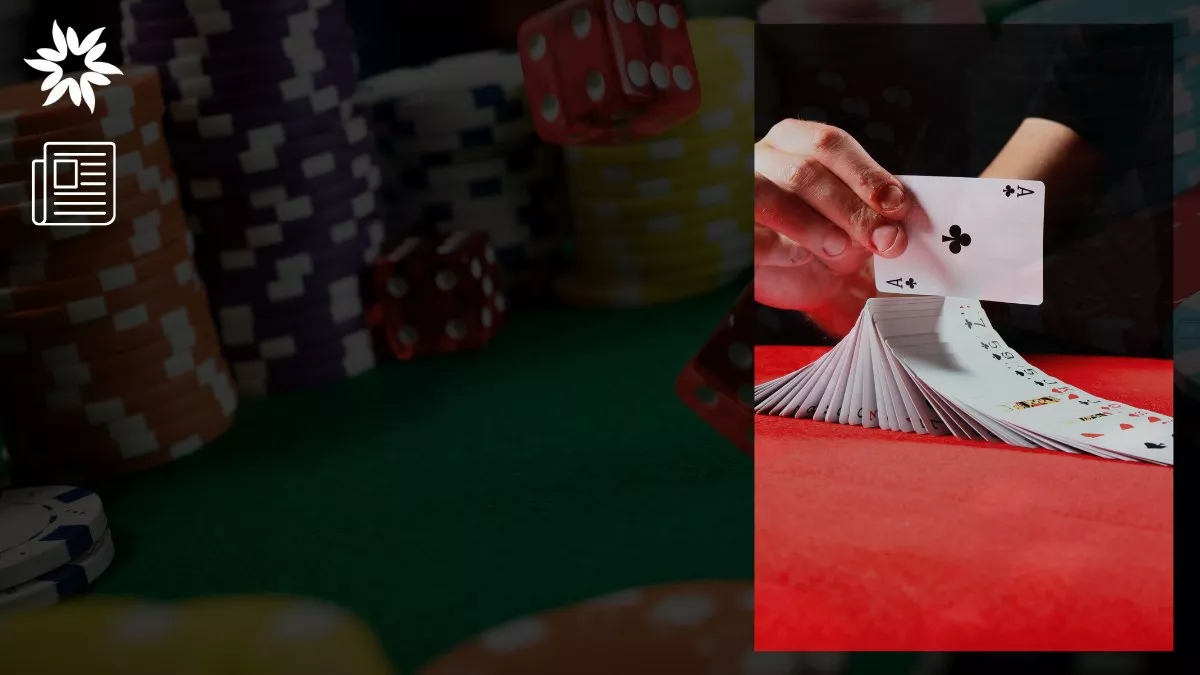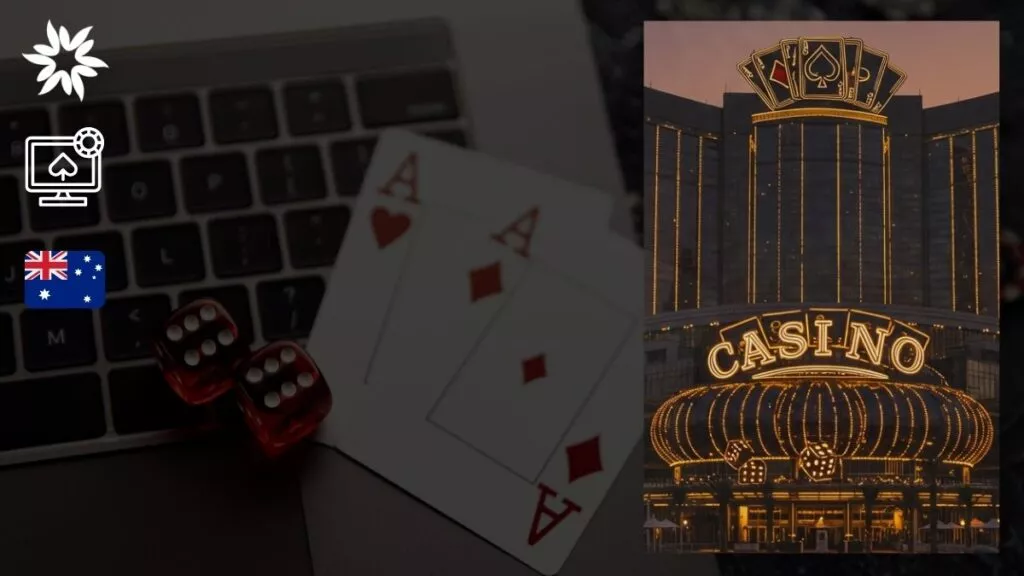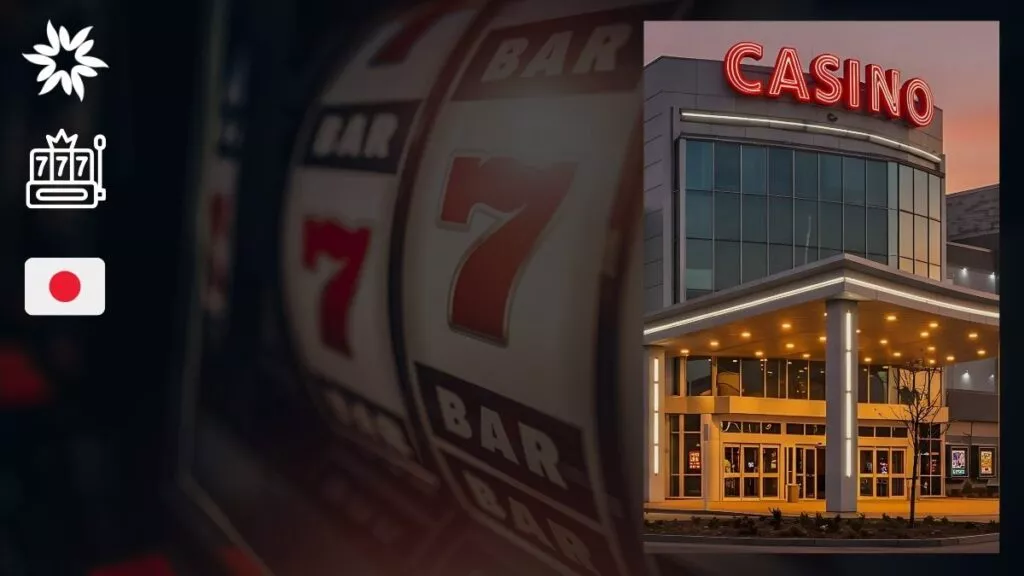Gambling is more than just a game of luck—it’s a science. Both physical and online casinos are increasingly relying on a branch of behavioral science known as Casino Psychology to design environments and experiences that keep players betting longer than they planned.
From flashing lights and sound effects to game mechanics that mimic near wins, these features aren’t accidental—they’re engineered to exploit how the human brain responds to risk, reward, and repetition.
According to the UK Gambling Commission’s Young People and Gambling 2023 report, 44% of 11 to 17-year-olds had engaged in some form of gambling in the past year—whether that was scratchcards, fruit machines, or betting with friends.
It’s not a measure of overspending, but it does hint at how early the behavior begins—and how normalized it’s become in environments built to feel harmless and rewarding.
Meanwhile, studies published in Nature Human Behaviour and The Journal of Gambling Studies have explored how mechanisms like intermittent rewards, personalized incentives, and loss aversion create a psychological storm: the kind that keeps people clicking long after the fun stops.
These aren’t just bells and whistles—they’re subtle, precision-engineered nudges designed to override logic and encourage compulsion.
In this article, we’ll explore the strategic design tricks casinos use—both on the gaming floor and behind the screen—to tap into our cognitive biases and keep us playing, often at a cost.
The Psychology Behind Gambling’s Allure
Gambling isn’t merely a game of chance; it’s a complex interplay of psychological triggers and neurological responses that can ensnare even the most rational minds. At the heart of this allure lies dopamine, a neurotransmitter intricately linked to pleasure and reward.
When individuals anticipate or experience a win, dopamine floods the brain, reinforcing the behavior and encouraging repetition. This mechanism is strikingly similar to how addictive substances affect the brain, making gambling a potent source of psychological reinforcement.
One of the most insidious aspects of gambling is the phenomenon of near-misses. These are outcomes that are tantalizingly close to a win, such as two matching symbols on a slot machine with the third just missing.
Research has shown that near-misses can be more motivating than actual wins, as they activate the brain’s reward circuitry, particularly in the midbrain region associated with dopamine release. This response can lead individuals to continue gambling, chasing the elusive win that feels just within reach.
Another psychological principle that gambling exploits is loss aversion. It’s when people tend to prefer avoiding losses over acquiring equivalent gains.
In the context of gambling, the pain of losing $100 often outweighs the pleasure of winning the same amount. Casinos and online gambling platforms capitalize on this by structuring games and rewards in ways that minimize the perception of loss and maximize the anticipation of potential gains.
Intermittent reinforcement further compounds the addictive nature of gambling. Unlike consistent rewards, intermittent reinforcement provides rewards at unpredictable intervals, making the behavior more resistant to extinction. This unpredictability keeps players engaged, as they never know when the next win might occur.
It’s a principle that has been well-documented in behavioral psychology and is a cornerstone of how gambling systems are designed to maintain player engagement.
The illusion of control is yet another psychological trap. Gamblers often believe they can influence outcomes through skill or strategy, even in games of pure chance. This belief can lead to increased risk-taking and prolonged gambling sessions, as individuals convince themselves that a win is just around the corner if they make the right move or choice.
Finally, the sunk cost fallacy plays a significant role in gambling behavior. This is the tendency to continue an endeavor once an investment in money, effort, or time has been made.
Gamblers may continue to play in an attempt to recoup losses, believing that quitting would render their previous investments worthless. This mindset can lead to escalating bets and deeper financial losses, as individuals chase the hope of breaking even.
Understanding these psychological mechanisms is crucial in recognizing the powerful grip that gambling can have on individuals. It’s not merely about the games themselves, but the intricate ways they interact with human psychology to create a compelling, and often dangerous, experience.
Physical Casino Design Tricks
Walk into a casino, and you’re not just entering a room—you’re stepping into a psychological maze built with precision. Every carpet swirl, every missing clock, every ringing slot machine has a purpose. It’s not just decoration. It’s design. A silent conversation between architecture and your brain. And it’s saying: stay a little longer.
This isn’t a conspiracy—it’s a strategy. Known in the industry as casino psychology, this discipline uses everything from lighting to layout to quietly steer your behavior.
While specific figures vary, research from the Center for Gambling Studies at Rutgers University indicates that certain physical design elements in casinos, such as strategic layout and ambient features, can influence gamblers to extend their playtime. These environmental cues are deliberately crafted to encourage prolonged engagement.
In other words, how casinos are built isn’t just clever—it’s profitable. And very, very deliberate.
No Clocks or Windows
You won’t find clocks or windows in a casino—not because someone forgot, but because someone didn’t. This is one of the most time-tested casino psychology tricks out there.
By removing any external cues to time, casinos create a sensory bubble where hours dissolve into background noise. It’s easy to think you’ve been playing for 45 minutes when it’s actually been three hours. Without natural light or ticking hands to anchor you, your brain loses track.
This tactic plays into a phenomenon known as “temporal distortion,” where the absence of time cues like clocks or windows leads players to lose track of time. While specific percentages vary, there are studies that show such environments can significantly extend gambling sessions by disrupting players’ internal sense of time.
Maze-Like Layouts
Navigating a casino can feel like traversing a labyrinth. This maze-like design is intentional, crafted to disorient and encourage exploration. By creating complex pathways and obscuring exits, casinos make it difficult for players to leave, subtly nudging them to continue gambling.
This layout strategy, often referred to as the “gaming design,” focuses on maximizing exposure to gaming opportunities. As players wander in search of restrooms or exits, they’re continually presented with enticing games and flashing lights, increasing the likelihood of spontaneous gambling decisions.
Strategic Game Placement
Casinos meticulously position games to capture attention and encourage play. High-energy games like slot machines are often placed near entrances and along main walkways, drawing players in with their vibrant lights and sounds.
Essential amenities, such as restrooms and restaurants, are strategically located deeper within the casino, requiring patrons to pass numerous gaming options to reach them.
This deliberate placement ensures that players are constantly exposed to gambling stimuli, even when attending to basic needs. The constant visual and auditory cues serve as subtle invitations to engage in additional play, capitalizing on impulsive behavior and increasing the time and money spent within the casino.
Stimulating Sounds and Lights
The cacophony of sounds and dazzling lights in a casino isn’t just for show; it’s a calculated strategy to stimulate the brain’s reward system. Slot machines, in particular, are designed to produce celebratory sounds and flashing lights even for small wins or near-misses, creating a sense of excitement and achievement.
This is one of the more subtle but effective psychological tactics in casinos. The idea is simple: make every result feel like a win. That slot machine jingle you hear across the floor? It’s not random—it’s a reminder that “winning” is happening all around you, maybe even to you, reinforcing your decision to stay and spin just one more time. Again.
Comfortable Environment and Freebies
The casino atmosphere influence plays a crucial role in how players behave. Casinos are designed to be comfortable and inviting, with plush seating, ambient lighting, and climate-controlled environments. This carefully crafted atmosphere encourages players to linger, reducing the likelihood of them leaving the gaming floor.
Additionally, many casinos offer complimentary drinks, including alcohol, to further enhance comfort and relaxation, subtly increasing the time and money spent at the tables.
The availability of free alcohol serves a dual purpose: it enhances the perception of hospitality and lowers inhibitions. As players consume alcohol, their decision-making abilities can become impaired, leading to riskier bets and prolonged gambling sessions.
This combination of comfort and indulgence is a powerful tool in the casino’s arsenal to keep players engaged.
Online Casino Tactics
Online casinos may lack the glitz and buzz of a casino floor, but don’t let the quieter interface fool you. What they lack in neon, they make up for in precision. These platforms are designed not just for gameplay, but for retention.
Through data tracking and behavioral modeling, they learn your habits fast—and adapt even faster. What you click, how long you hover, and when you typically play—every bit of that is used to subtly keep you engaged.
And they’re good at it. Really good. Features like autoplay, personalized offers, and near-miss animations aren’t just added flair—they’re tested tools that make logging off feel unnatural. A 2024 study published in Frontiers in Psychiatry examined its real-world impact at an online casino in Sweden. The researchers found that autoplay increased the number of spins by about 3% and the total amount wagered by roughly 7–9%.
In other words, even subtle design choices like autoplay can measurably increase how much players spend, without them necessarily noticing. When combined with tactics like near-miss animations and personalized promos, the result is a gambling environment that’s quiet, seamless, and incredibly sticky.
Near-Miss Designs
In the realm of online gambling, near-miss designs are a subtle yet powerful tool. These occur when a game outcome is tantalizingly close to a win, like two matching symbols on a slot machine with the third just off. While technically a loss, this near-win scenario can trigger a psychological response akin to an actual win, encouraging players to continue playing in pursuit of a perceived imminent victory.
Research supports this effect. Another study published in Psychology of Addictive Behaviors found that near-misses increased players’ motivation to keep gambling, led to faster initiation of subsequent plays, and even prompted higher bets.
These findings highlight how near-miss designs can manipulate players’ perceptions, making them believe they’re on the verge of a win, thereby prolonging gameplay and increasing spending.
Auto-Play Features
We already know that autoplay makes it easier to lose track of time. But there’s another layer: it can also reduce emotional friction. When players hit “spin” manually, there’s a moment of reflection—a breath to consider your balance, your choices.
With autoplay, that pause vanishes. What you’re left with is a stream of continuous bets that bypass the part of the brain wired for risk assessment.
In behavioral economics, this is called frictionless spending, and it’s powerful. The less effort a user has to make to repeat an action, the more likely they are to keep doing it. Online casinos know this.
They remove barriers between you and the bet—no coin to insert, no arm to pull, not even a button to press. It’s gambling on autopilot, and for some players, that’s where the real danger begins.
Personalized Promotions
Online casinos leverage data analytics to tailor promotions and notifications to individual players. By analyzing a player’s gaming habits, preferences, and spending patterns, casinos can craft personalized offers that are more likely to entice continued play.
These promotions might include bonuses on favorite games, exclusive offers, or reminders to play during preferred times.
This level of personalization enhances the gaming experience, making players feel valued and understood. However, it also raises concerns about the potential for increased gambling behavior, as these targeted promotions can exploit individual vulnerabilities and encourage prolonged play.
Illusion of Wins
Some online casino games are designed to celebrate outcomes where the player wins less than their original bet, creating an illusion of a win. For instance, if a player bets $10 and wins $5, the game might still trigger celebratory sounds and visuals, giving the impression of success despite a net loss.
This tactic can distort a player’s perception of their actual performance, leading them to believe they’re winning more often than they are. The reinforcement from these “losses disguised as wins” can encourage continued play, as players chase the excitement of these perceived victories, potentially leading to increased gambling expenditure.
Why These Tricks Work
These design elements exploit psychological principles like the illusion of control, where players believe they can influence outcomes, and the sunk cost fallacy, where individuals continue investing in a losing endeavor due to prior investments.
Intermittent rewards—unpredictable payouts—are particularly effective, as they create a strong desire to continue the behavior in hopes of a reward.
The Illusion of Control
In games of chance, there’s little to no room for strategy. But that doesn’t stop players from believing otherwise. This is called the illusion of control—the belief that your choices affect outcomes in games that are, at their core, randomized.
Choosing when to press “spin,” picking your lottery numbers, or stopping the slot machine manually can make you feel more in charge than you actually are.
Studies from Harvard psychologist Ellen Langer dating back to the 1970s laid the foundation for this phenomenon, and newer research continues to confirm its impact in gambling contexts. Feeling “in control” boosts confidence, increases risk-taking, and makes wins feel earned—even when they’re statistically no different from a computer roll.
The Power of Intermittent Rewards
Slot machines and online games don’t reward consistently. They reward occasionally and unpredictably. This is called intermittent reinforcement, and it’s one of the most powerful motivators of repeated behavior. In fact, this same pattern is what makes social media and notifications so addictive.
A 2024 study published in Current Opinion in Behavioral Sciences confirmed that intermittent rewards trigger stronger dopamine responses than predictable ones. The brain stays on edge, craving the next hit, especially because you never know when it’s coming. It’s this uncertainty, not the reward itself, that keeps players hooked.
The Sunk Cost Fallacy
One of the more deceptive psychological traps is the sunk cost fallacy—the idea that you should keep investing in something because you’ve already spent time, money, or effort on it. In gambling, this shows up as the urge to “win it back” or keep playing because you’re already “deep in it.”
This fallacy is particularly dangerous in high-frequency gambling environments, where hundreds of small decisions accumulate over time.
According to a 2024 report by the National Council on Problem Gambling, 64% of respondents who reported problematic gambling behavior cited “trying to recover losses” as their main reason for continuing to play, even when they knew they should stop.
Emotion Over Logic
When you’re immersed in a fast-paced, high-stimulation environment, you’re not making decisions with the rational, calculating part of your brain. You’re reacting emotionally, impulsively. Casinos know this, and they design games, lights, and sounds to short-circuit logic and amplify emotion.
Rapid betting cycles leave little room for reflection. Combine this with music, flashy effects, and artificial “wins,” and it becomes easier to keep playing without stopping to assess whether you’re actually ahead or spiraling. It’s not about making smart bets—it’s about staying on the ride.
Fast Play, Slower Judgment
The rapid pace of modern gambling games isn’t just about excitement—it’s a calculated design choice that can impair decision-making. A study by Nottingham Trent University found that high-speed gambling reduces self-control, even among non-problem gamblers.
The faster the game, the less time players have to reflect, leading to more impulsive decisions and prolonged play.
It’s Not Just You
If any of this feels uncomfortably familiar, it’s because these tactics are meant to feel seamless. The line between entertainment and manipulation can be thin—and invisible in the moment.
Whether it’s the thrill of a near-miss, the temptation of a custom promotion, or the compulsion to chase a loss, these designs work because they’re built with human psychology in mind.
Understanding how these tricks function doesn’t make you immune to them, but it does give you a fighting chance to recognize when the game isn’t just on the screen—it’s being played in your head.
Smart design or user manipulation?
So, where’s the line between a well-designed game and a behavioral trap? That’s the uncomfortable question looming behind every flashing slot machine and autoplay spin.
Yes, casino design is clever—brilliant, even—but brilliance without boundaries can become exploitation. And in the world of gambling, that line is often crossed long before anyone realizes it.
These strategies are perfectly legal. They’re engineered using the same behavioral cues that make apps addictive or supermarkets place candy at eye-level. The difference? Casinos are playing with something far more volatile than impulse purchases: the human desire for reward, escape, and control.
Critics argue that what’s being sold here isn’t fun—it’s a false sense of agency. You’re not just playing a game; you’re being nudged, prompted, and rewarded in ways that override logic. When design choices are built to capitalize on cognitive biases, like the sunk cost fallacy or loss aversion, they stop being neutral. They become manipulative.
The gambling industry often defends these tactics as immersive entertainment, and for many players, that may be true. But advocates for responsible gambling are pushing back, calling for stronger consumer protections, mandatory loss limits, and transparency about how these systems work. If a player is betting against the odds, they argue, the least a casino can do is level the psychological playing field.
In the end, the ethics of casino design don’t hinge on whether something is technically allowed, but on who it benefits and who it harms. Is the goal to entertain? Or to extract every possible dollar before someone finds the exit? That’s not a design question. That’s a moral one.
Behind the Glitz: What’s Really at Stake
Casino design isn’t just clever—it’s psychological architecture built to tilt the table before you even sit down.
From glowing slots to autoplay loops and precision-engineered digital promos, both physical and online casinos rely on science, not just luck, to keep players spinning, clicking, and betting. These aren’t accidents. They’re deliberate mechanisms wired to keep you inside the system.
Understanding how these mechanisms work—how near-misses fool your brain, how a free drink lowers your guard, how a fake win still feels like a win—can make the invisible visible. Once you see the strings, it’s harder to be the puppet. And while awareness doesn’t eliminate risk, it does arm you with perspective: a moment of pause in a world engineered for momentum.
The industry calls it immersive entertainment. Critics call it manipulation. Reality, as always, lives somewhere between those poles. But as gambling technologies become more personalized, more mobile, and more embedded in daily life, the question isn’t just whether we’re playing the game—it’s whether we’re the ones being played.








